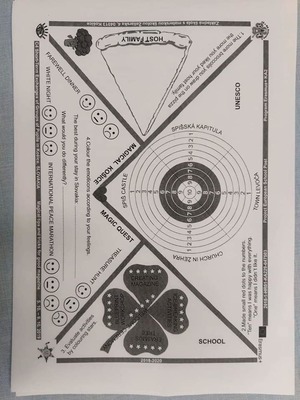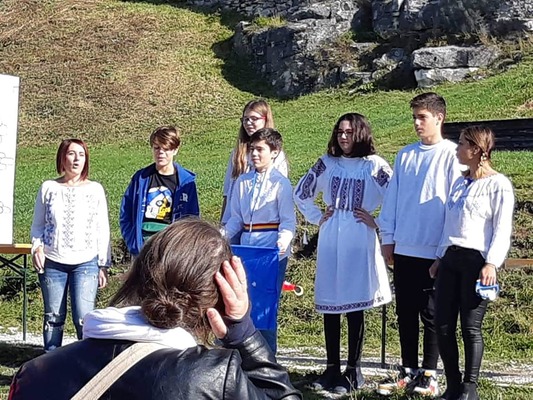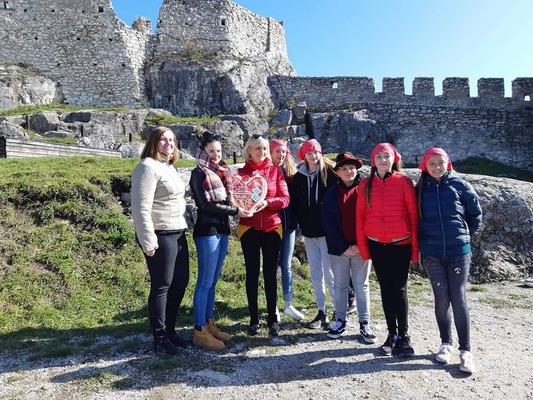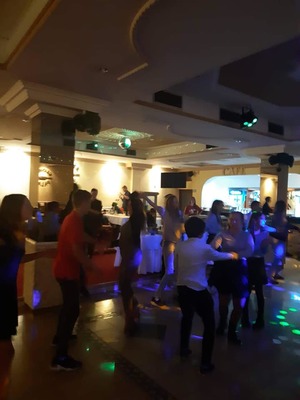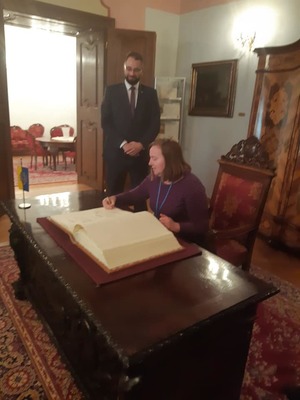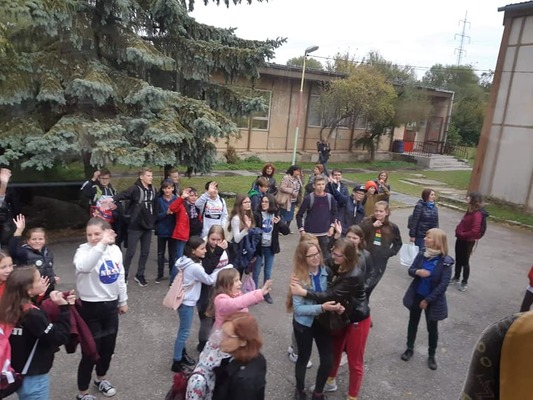From 5th to 9th October 2019 was short-term exchange of groups of pupils held. Hostin organisation was Zakladna skola s materskou skolou Zeliarska 4, Košice, Slovakia.
Content:
Multilingual Košice, UNESCO cultural heritage and Slovaks as a nation close to the mountain were the three main topics of the mobility, where pupils learnt new skills how to make a magazine and gained information about Slovak culture.
1. Welcome ceremony, Ice breaking activities (How to speak Slovak in 15 minutes, Compare school lives, Team building ...), walking around the school and taking part in one lesson, workshop of Slovak Heritage, ignition of Marathon Fire, White night, making videos
2. International Peace Marathon - Taking pictures for the magazine - competition, multilingual Košice in the past and present with treasure hunt - collecting photos and following a map and instructions, Gold Treasure of Košice
3. educational visit to UNESCO cultural heritage: Spišská Kapitula, Church in Žehra, the Spiš Castle - collecting materials for the magazine - photos, Erasmus contribution for the castle (Intangible Cultural Heritage, not financial), meeting the media
4. How to make a good magazine: Tips and Tricks - workshop, meeting with a reporter and the Vice-Mayor of Košice, introducing popular Slovak magazines for children Fľak, creating the magazine, warming up activities of reading comprehension and creative writing, creating the magazine with the help of ICT.
5. Meeting the Mayor of Ťahanovce village, visiting classes, Ovce.sk – Slovak cartoons about safe internet usage, planting Erasmus tree, evaluating activities (Superman’s cape, Find somebody who – about feelings), sports in the school gym, certificates
Methodology and results: We used ice breaking activities, performance, workshops, excursions, demonstration, educational visit with treasure hunt, presentation of tangible and intangible UNESCO heritage of six partner countries, solving tasks and creating the magazine, introducing Slovak culture and tasting Slovak dishes, sports activities, reading comprehension and creative writing, using ICT, evaluating activities, questionnaire of satisfaction, fluent communication in English, experiencing unique events of Košice – White Night and the International Peace Marathon, introducing the Slovak school system and visiting classes, practical activities - planting Erasmus tree, creating blueprint, walk in the nature.
Participants: Pupils from six partner countries (26 from abroad, 26 from Slovakia directly involved and many others), foreign teachers (14), teachers (16) and other employees from Slovakia organizing the program, journalists, city and museum workers, Vice-Mayor of Košice and the Mayor of Ťahanovce village, parents, friends of Slovak pupils participated this meeting.
3 days of the program were out of school (Peace Marathon, White night, multilingual Košice treasure hunt, UNESCO cultural heritage). On the fourth day of the project school classes were reorganized, most of the project work was done in the school corridor. On the last working day the whole school community met pupils from abroad while visiting classes.
Pupils worked in mixed groups using English. Pupils stayed in families, so we needed to provide some free time, when pupils from other countries could socialize with the locals.
All pupils participating in this mobility received a Certificate of active participation and learnt new skills about reading comprehension, creative writing and creating a magazine, information about Slovak culture and social competencies. Each pupil took home valuable experiences and had fun. A new environment brought new ideas and changed our world view when we can feel closer in Europe. Pupils informed their Mother tongue teachers and Geography teachers about practiced activities in Slovakia. Pupils are more confident in using English for communication and in composing written work. They took home social competencies and will influence their community with them.
Schools created a magazine that needed to be aligned on one hand, but interesting and pleasant to read on the other hand. This mobility provided useful skills for pupils to be able to present themselves also later in their lives using both mother tongue and English language.
Except pupils also adults benefited from the mobility.
